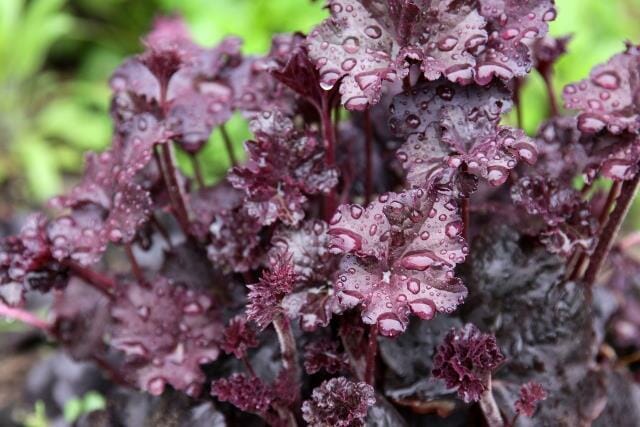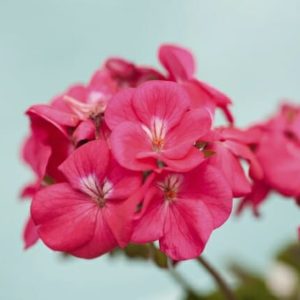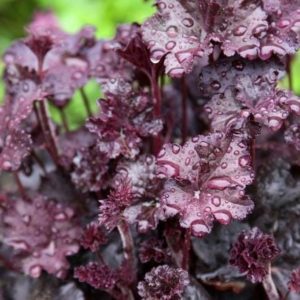
Choice Perennials For 2014
Choice Perennials For 2014
Dr. Leonard Perry, Extension Professor
University of Vermont
 Each year, members of the Perennial Plant Association– the industry group representing growers and professional garden designers nationwide—vote on their top perennials. From the final group of new cultivars (cultivated varieties), or those deserving wider use, the Perennial Plant of the Year is chosen (www.perennialplant.org). These choice perennials of the professionals is a good place to start when choosing for your own garden from the thousands available. This year the top perennials include a switchgrass, bishop’s cap, perennial geranium, coralbells, and a hosta.
Each year, members of the Perennial Plant Association– the industry group representing growers and professional garden designers nationwide—vote on their top perennials. From the final group of new cultivars (cultivated varieties), or those deserving wider use, the Perennial Plant of the Year is chosen (www.perennialplant.org). These choice perennials of the professionals is a good place to start when choosing for your own garden from the thousands available. This year the top perennials include a switchgrass, bishop’s cap, perennial geranium, coralbells, and a hosta.
Epimedium ‘Sulphureum’ (Epimedium x versicolor), also known as bishop’s hat or barrenwort, is a clump forming perennial which grows 8 to 12 inches tall and can be used as a ground cover or edging perennial in the shade garden or woodland area. This epimedium features short-spurred yellow flowers which are held in clusters (called “racemes”) above the foliage in the spring.
This cultivar (cultivated variety) is easily grown in average, dry to medium, well-drained soils in part shade to full shade sites. It will tolerate drought conditions once established and competes well with tree roots. The leathery and spiny-edged leaflets are less attractive to rabbits and deer. Cold hardiness is listed as USDA zone 5 (-10 to -20 degrees), although I have grown it successfully in more cold as long as there is some snow cover.
‘Biokova’ perennial geranium (Geranium x cantabrigiense) is a natural hybrid discovered in the Biokova Mountains in Croatia. This hardy geranium has a spreading habit, growing 6 to 10 inches tall with a 24-inch spread. The white flowers are tinged with pink at the petal base and have pronounced pink stamens. The overall flower effect in late spring (around the time of rhododendrons, which it looks great planted around) is very pale pink. The aromatic foliage turns red in the fall. This geranium works well as a ground cover and is also effective in border fronts or rock gardens. Cold hardiness is to USDA zone 4 (-20 to -30 degrees).
 ‘Obsidian’ (Heuchera) is a clump-forming coralbells noted for dark purple to almost black leaves that remain dark through the growing season. The leaves create a compact basal mound 8 to 10 inches tall. Creamy white flowers are carried on long, thin stems that grow 20 to 24 inches tall. Flowering occurs in late spring to early summer. The ultra dark foliage contrasts nicely with all the greens, blues, silvers, and yellows of a sunny to partly shaded garden. Cold hardiness is to USDA zone 4.
‘Obsidian’ (Heuchera) is a clump-forming coralbells noted for dark purple to almost black leaves that remain dark through the growing season. The leaves create a compact basal mound 8 to 10 inches tall. Creamy white flowers are carried on long, thin stems that grow 20 to 24 inches tall. Flowering occurs in late spring to early summer. The ultra dark foliage contrasts nicely with all the greens, blues, silvers, and yellows of a sunny to partly shaded garden. Cold hardiness is to USDA zone 4.
‘Blue Mouse Ears’ hosta is a miniature hosta with thick, almost rubbery, round, bluish-green to grey-green leaves. The thick leaves tend to make this hosta cultivar more slug resistant. Blue Mouse Ears forms a tight mound and forms a clump that is 8 inches high by 12 inches wide. It is a very tidy looking hosta that is attractive both in formal or casual gardens. Use this miniature hosta in rock gardens, borders, or in containers. It is quite cold hardy to USDA zone 3 (-30 degrees or below).
With the above perennials considered top choices for a future perennial of the year, the one winning for 2014 is a perennial grass. ‘Northwind” is a cultivar of ornamental switchgrass (Panicum virgatum, said as PAN-eh-cum vir-GA-tum), with olive-green to bluish leaves through the season. It is one of the more upright cultivars, staying vertical in winds without staking as many similar switchgrasses require. Reaching 4 to 5 feet tall and up to 2 feet across, it is topped with fine-textured flower panicles above the leaves in late summer.
As with all switchgrasses, it prefers full sun and a moist and fertile soil. It will tolerate sandy or clay soils, and drought once established. It is hardy to much of the north (USDA zone 4, -20 to -30 degrees F average low in winter). This perennial looks good in masses, in the middle to back of borders, on slopes, and combined with many other perennials.
6/1/14
Distribution of this release is made possible by University of Vermont Extension and New England Grows–a conference providing education for industry professionals and support for Extension’s outreach efforts in horticulture.
Receive your complimentary Relocation guide and magazine


